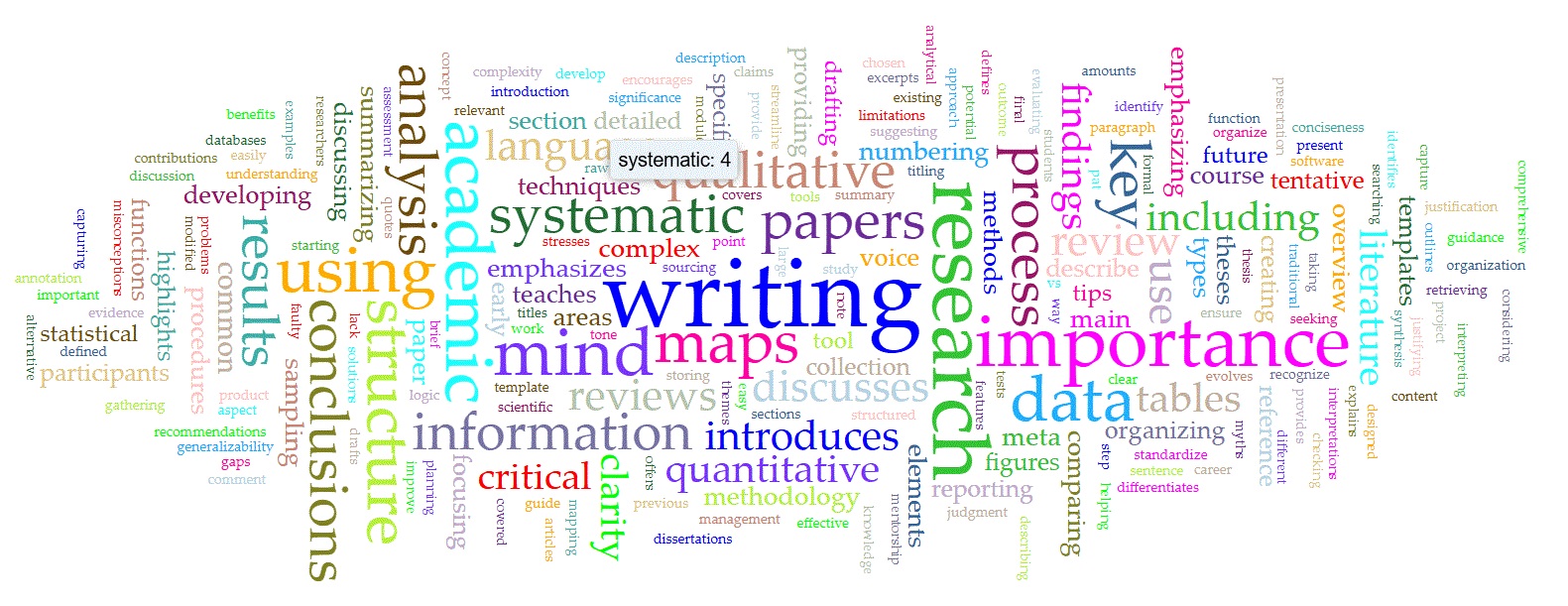Introduction to Academic Writing is designed to guide students and early-career researchers through the process of writing academic papers, theses, and research articles. The course is structured into several modules, each focusing on a specific aspect of academic writing. Here is a brief summary of the course content:
- Overview: Introduces the concept of academic writing, its importance, and its key features such as a well-defined structure, formal tone, and analytical approach.
- Common Misconceptions: Addresses myths about academic writing, emphasizing that clarity and conciseness are more important than using complex language.
- Information Gathering: Highlights the importance of being systematic in sourcing, storing, and retrieving information using databases and reference management software.
2. Capturing Structure: Developing a Template
- Understanding Structure: Teaches how to recognize and capture the structure of scientific papers and theses, focusing on the function of each sentence within a paragraph.
- Tools and Techniques: Introduces the use of a Paper Annotation Tool (PAT) to standardize note-taking and develop a critical voice.
- Templates: Encourages creating section-specific templates to streamline the writing process.
- Process and Outcome: Defines the literature review as both a process (searching for relevant papers) and a product (a comprehensive overview of existing knowledge).
- Critical Assessment: Emphasizes the importance of developing a critical voice by evaluating evidence, checking logic, and comparing claims.
- Types of Reviews: Discusses different types of literature reviews, including traditional, systematic, meta-analysis, and meta-synthesis reviews.
- Writing Tips: Provides guidance on organizing the review, seeking mentorship, and using examples to improve writing.
- Mind Mapping: Introduces mind maps as a tool for planning the structure of a thesis or research paper, helping to organize information and identify gaps.
- Benefits: Explains how mind maps provide a starting point for drafting, aid in organizing large amounts of information, and can be easily modified as the project evolves.
- Tips and Solutions: Offers advice on creating effective mind maps and addressing common problems in early drafts, such as faulty organization and lack of clarity.
- Methodology Justification: Emphasizes the importance of providing a clear and detailed account of research methods and justifying the chosen methodology.
- Participants and Sampling: Discusses how to describe participants and sampling procedures to ensure generalizability.
- Data Collection and Analysis: Covers the description of data collection and analysis procedures, including the use of statistical tests and qualitative analysis techniques.
- Key Elements: Identifies key elements of the discussion section, such as interpreting results, comparing to previous research, suggesting areas for future research, considering study limitations, and summarizing key contributions.
- Tentative Language: Highlights the importance of using tentative language when discussing findings to acknowledge the potential for alternative interpretations.
- Systematic Presentation: Teaches how to present and describe results in a systematic and detailed way, using tables, figures, and quotes from raw data.
- Qualitative vs. Quantitative: Differentiates between reporting qualitative and quantitative results, emphasizing the use of themes and excerpts for qualitative data and statistical tables for quantitative data.
- Numbering and Titles: Stresses the importance of numbering and titling all figures and tables for clarity and easy reference.
- Functions: Outlines the two main functions of conclusions: summarizing the main areas covered and providing a final comment or judgment.
- Complex Conclusions: Discusses the complexity of conclusions in dissertations and research papers, including sections on the significance of findings and recommendations for future work.
